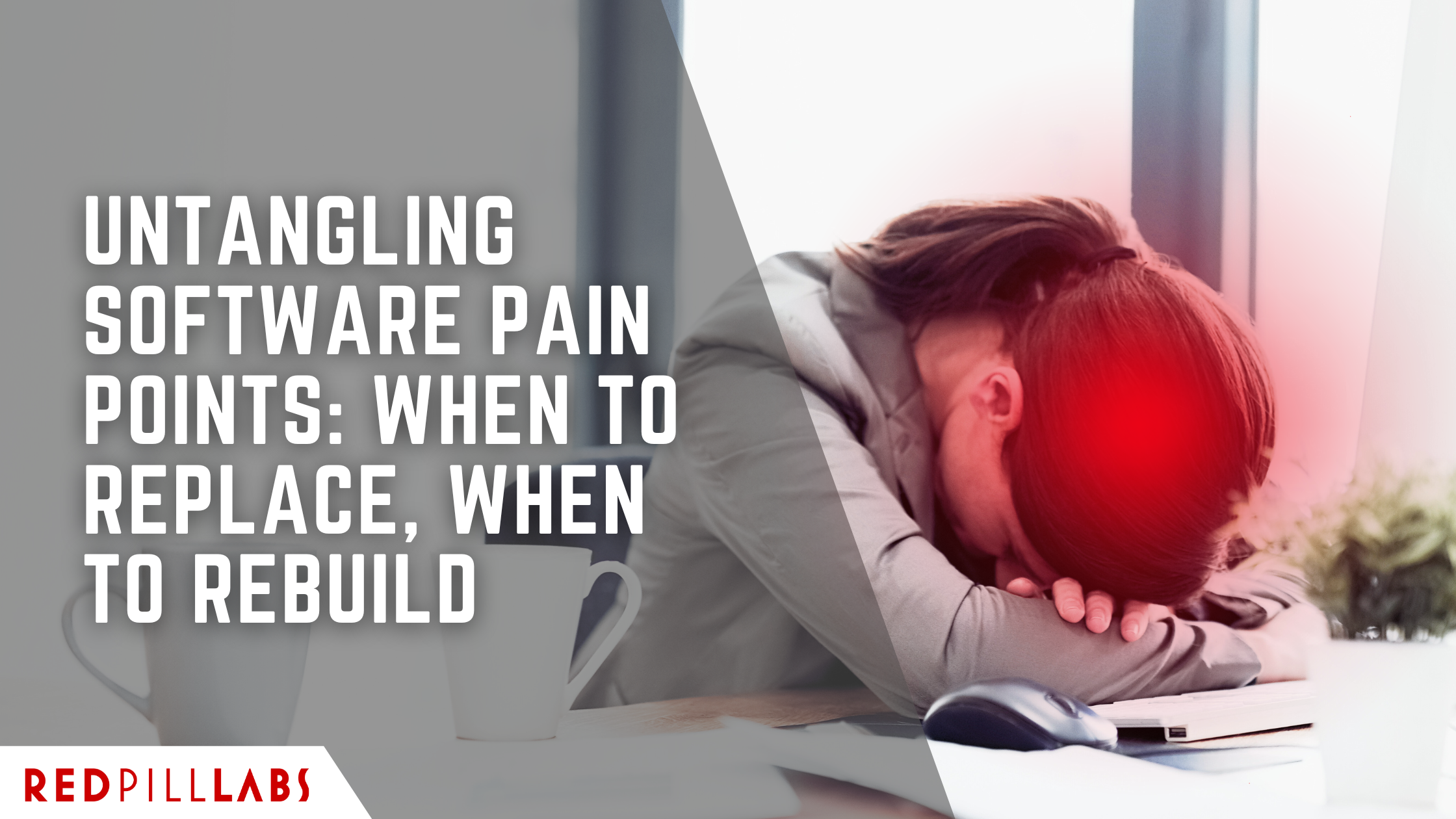5 Common AI Integration Pitfalls in Finance
blog/5-common-ai-integration-pitfalls-in-finance
2025-08-18
Lessons From our Project Management Office
AI adoption in finance promises big benefits, but many initiatives fall short of expectations.
From misaligned goals to overlooked data issues, finance leaders often encounter challenges that delay or derail AI projects.
Understanding and avoiding these common pitfalls is key to unlocking AI’s real potential.
The culprit isn’t usually the technology — it’s the implementation.
In finance, the stakes are highs: missteps can trigger compliance issues, data breaches, or reputational damage.
Here’s what our PMO has learned from guiding key technology rollouts across multiple finance environments.
Mistake #1: Buying Hype, Not Solutions
Why it happens:
Finance leaders are often under pressure to “do something with AI” after seeing competitors make announcements. With vendors pitching “plug-and-play” miracles, it’s easy to skip the needs assessment.
Over-buying into hype leads to poor vendor selection that ultimately may have lead to limited support, inadequate functionality, and proprietary “locked-in” systems.
Example:
A mid-market retail finance team purchased an AI expense categorization tool without considering its integration with their ERP.
The tool worked fine in isolation — but their chart of accounts structure didn’t map cleanly, and the result was weeks of manual rework every month.
Recommendation:
Start with a gap analysis: What finance decisions do we wish we could make faster or better?
Continue with a thorough mapping of current business processes and technology data flows to ensure all requirements are correctly identified to ensure maximum integration compatibility and value.
Evaluate vendors based on fit, integration capability, and long-term support, not marketing promises.
Mistake #2: Neglecting AI Data Governance and Security.
Why it happens:
Finance teams often assume that existing data controls automatically cover AI initiatives.
However, AI introduces new data flows, broader access requirements, and model-specific risks.
Without formal policies, organizations risk regulatory non-compliance, data misuse, inaccurate outputs, and ultimately, financial loss.
Example:
A financial services firm trained a forecasting model on operational and customer credit data without applying proper anonymization or approval workflows.
This violated privacy regulations across multiple jurisdictions and triggered a costly remediation effort that impacted both the finance and IT budgets.
Recommendation:
Develop and enforce AI-specific data governance policies, covering:
Data quality standards
Privacy and anonymization requirements
Retention, access, and audit policies
Treat AI governance as an ongoing program, not a one-time checklist.
Ensure clear accountability: assign owners for data quality, model input validation, and regulatory compliance.
Learn more about our framework for Secure AI Adoption.
Mistake #3: Failing to Measure AI ROI
Why it happens:
AI ROI is harder to measure than other tech projects because costs and benefits can be indirect, or complicated to calculate.
When new AI technology can cost a premium to implement, the savings you gain need to be benchmarked against historical data.
Direct costs like AI licensing are straightforward, but what about the data pipeline overhaul necessary to enable Finance and IT to properly leverage AI?
Reduction in work hours are an easy to feel benefit, but what about new work being done that wasn’t before, or increased accuracy and quality?
Without clear KPIs, AI becomes a perpetual experiment that’s hard to justify to the CFO or audit committee.
Example:
A manufacturing company implemented AI to detect anomalies in payables, but after a year, they couldn’t quantify savings because they had no baseline for prior error rates.
The project was shelved despite clear anecdotal benefits.
Recommendation:
Define your ROI model before implementation. For example:
Time saved in reconciliations per month
Reduction in late-payment penalties
Increase in forecast accuracy percentage
Track these periodically and feed them into your investment decision framework.
Learn more by reading our deep dive into measuring ROI in AI Projects,
Mistake #4: Poorly Managed AI Projects
Why it happens:
AI initiatives often fall into a grey zone between IT, finance, and data science.
Few organizations have dedicated AI ownership, leading to fragmented decisions and stalled delivery.
Research from PMI shows that up to 70% of AI projects fail to meet their objectives, with poor management and unclear accountability among the top causes.
In finance, this isn’t just lost opportunity — it can mean sunk costs, reputational damage, and executive resistance to future AI projects.
Example:
A large distribution company attempted to roll out AI-driven invoice matching.
Because no single leader “owned” the project, finance assumed IT would handle data preparation, IT assumed finance would validate model outputs, and neither had bandwidth for ongoing adjustments.
Without alignment, timelines slipped by six months, costs ballooned, and the CFO ultimately shut the project down.
Recommendation:
Treat AI projects with the same rigor as any major finance transformation:
Assign a project manager who understands both finance processes and AI implementation
Define clear decision rights and ownership from the outset
Establish milestone tracking and risk logs to prevent small issues from derailing timelines
Learn more from our Project Management team about best practices, case studies, and lessons learned.
Mistake #5: Neglecting Change Management
Why it happens:
Even technically sound AI projects fail when end users don’t adopt them.
Finance teams are naturally risk-averse, and introducing new tools without proper communication, training, and engagement leads to low usage or outright resistance.
Approximately 40% of AI adoption projects lack appropriate training and executive sponsorship.
Example:
A finance team rolled out an AI forecasting tool, but analysts continued using spreadsheets because they didn’t trust the model outputs.
The project delivered no measurable benefit, despite being technically successful.
Recommendation:
Embed change management from the outset, not as an afterthought.
Conduct stakeholder analysis to identify champions and resistors.
Provide training, documentation, and iterative feedback loops to increase confidence in AI outputs.
Communicate clear value and measurable benefits to each user group.
Align adoption goals with performance metrics to ensure accountability.
Best Practices for Success
To avoid pitfalls and maximize value, finance leaders should:
Assess Needs: Define clear, realistic AI objectives directly aligned with finance priorities, such as faster closes, reduced DSO, or improved audit readiness.
Drive Adoption: Embed change management from the outset. Use training, communication, and stakeholder engagement to build trust, confidence, and consistent usage.
Govern Data: Establish robust AI-specific governance and compliance frameworks covering data quality, privacy, access, and auditing before implementation.
Project Management: Assign dedicated project managers with both AI and finance expertise. Clearly define ownership, milestones, risks, and schedules to ensure smooth execution.
Measure ROI Early: Set baseline metrics and maintain a living ROI dashboard to track AI’s ongoing impact, guide investment decisions, and secure executive support.
How to Stay Ready: A Readiness Roadmap
To position your organization for sustainable AI success to avoid implementation mistakes:
Assess readiness honestly
Audit data quality, governance, and system integrations
Map process bottlenecks where AI could have measurable effect
Align AI to finance strategy
Link use cases to margin improvement, risk reduction, or faster reporting cycles
Develop and refine use cases
Start with high-impact, low-risk areas (e.g., reconciliations, anomaly detection)
Run pilots, prove ROI, then scale
Select solutions that fit your environment
Prioritize ERP and reporting tool compatibility
Avoid “square peg, round hole” tools that need heavy workarounds
Establish ROI and change management from day one
Define baselines and KPIs
Track impact and communicate success frequently
Build adoption through training, stakeholder input, and iterative rollouts
This approach ensures AI initiatives remain anchored in business value, resilient to hype cycles, and aligned with the evolving demands of finance.
AI in finance is not just about new technology — it’s about disciplined execution, cross-functional alignment, and embedding AI as a capability rather than a one-off project.
With the right governance, project management, and change strategy, finance leaders can avoid costly pitfalls and unlock sustainable ROI in AI projects.











